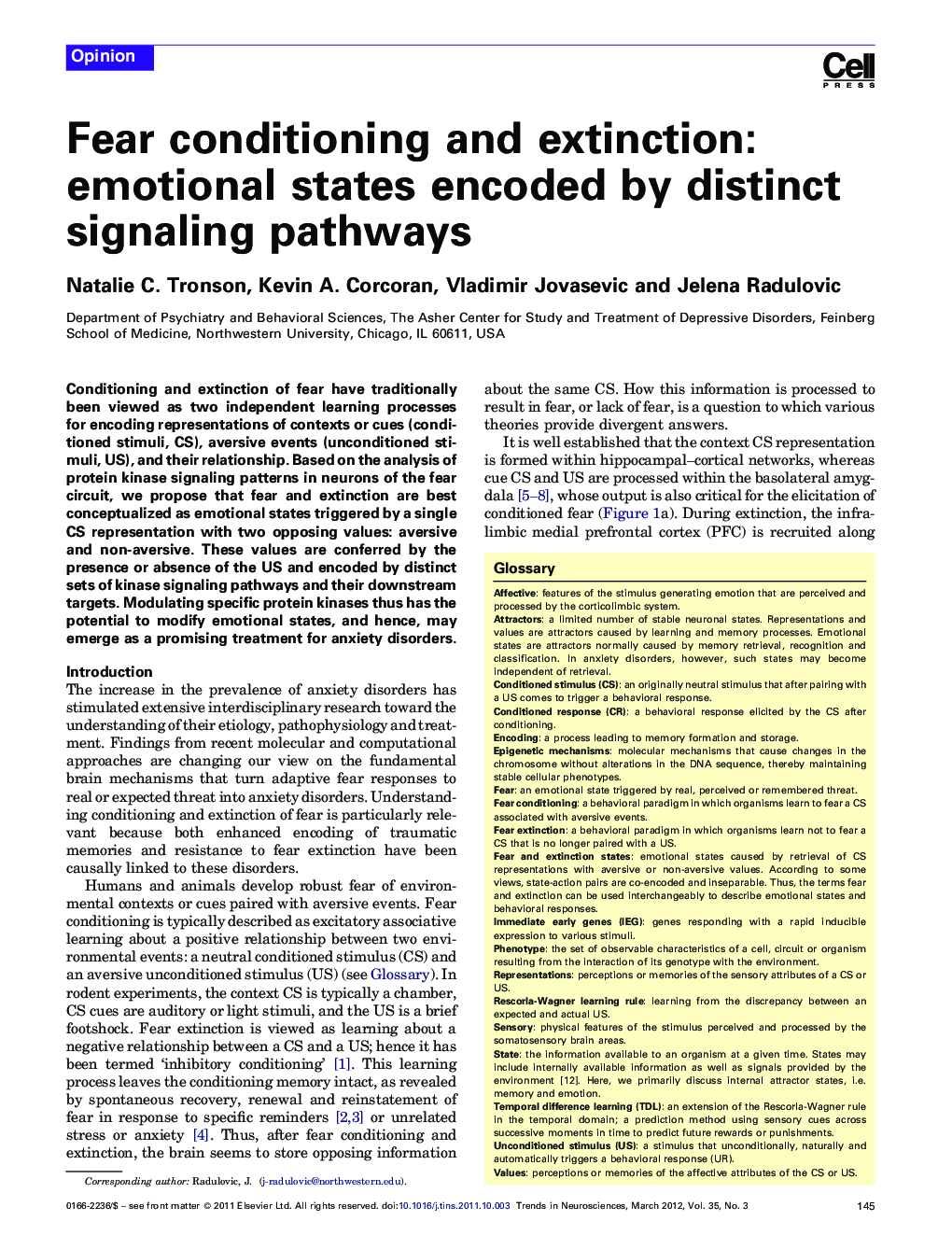| Article ID | Journal | Published Year | Pages | File Type |
|---|---|---|---|---|
| 4354505 | Trends in Neurosciences | 2012 | 11 Pages |
Conditioning and extinction of fear have traditionally been viewed as two independent learning processes for encoding representations of contexts or cues (conditioned stimuli, CS), aversive events (unconditioned stimuli, US), and their relationship. Based on the analysis of protein kinase signaling patterns in neurons of the fear circuit, we propose that fear and extinction are best conceptualized as emotional states triggered by a single CS representation with two opposing values: aversive and non-aversive. These values are conferred by the presence or absence of the US and encoded by distinct sets of kinase signaling pathways and their downstream targets. Modulating specific protein kinases thus has the potential to modify emotional states, and hence, may emerge as a promising treatment for anxiety disorders.
